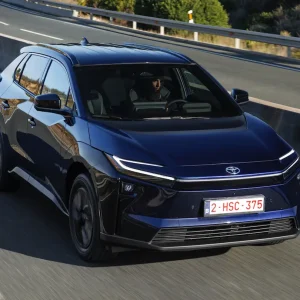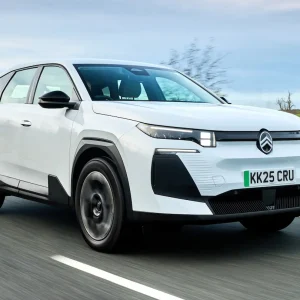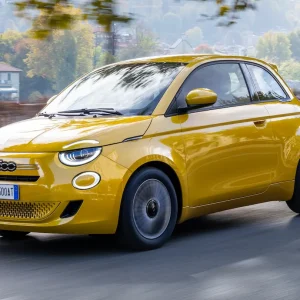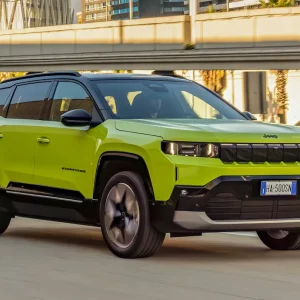The Golf is Volkswagen’s most important car. Fact. It’s the firm’s biggest-selling model globally and over its 43-year history has become something of an icon for the brand. Ask anyone to name a VW car and 99% of the time it will be the Golf that springs to mind first.
One of the best all-round cars money can buy, the Golf is practical, good to drive, comfortable and economical. The only real criticism is that it’s just a little, well, beige.
In 2017 the Golf gets the lightest of facelifts, with only a couple of minor tweaks to the design, with new LED lights and subtle bumper changes. Inside there’s been an uplift in cabin quality, a new infotainment system and the latest 12.3-inch Active Info Display – the phrase ‘why fix something which isn’t broken’ is very much the case here.
Digital innovations
According to VW boss Herbert Diess, usability and connectivity is just as important as engines and gearboxes to drivers these days, and it’s the digital upgrade in this 2017 Golf that is the most significant change.
Showcasing features that are more akin to premium cars, tech like Gesture Control (which allows you and your passengers to swipe your hand through various menus), wireless phone charging, WiFi capabilities, Apple CarPlay and a raft of driver-assist systems, including City Emergency braking, which now detects pedestrians, and traffic Jam Assist, is now available in the Golf.

Another new feature is Car-Net, which will notify the emergency services if the airbags are deployed or text your mobile phone if someone attempts to break into the car. There’s also real-time information, which details nearby fuel stations and pump prices as well as local parking information. Fleets will find this system particularly useful.
As good as ever
The Golf is one of the only cars you can buy as a full-electric model (which has improved its range by over 50%), plug-in hybrid, or with a petrol or diesel engine under the bonnet. There are a number of engines on offer including an all-new 150hp 1.5-litre petrol and the same 150hp 2.0-litre diesel. We tested both while driving the pre-production Golfs in Spain.
To drive, the car is the same as it has always been – pretty faultless. Both engines proved excellently refined, with enough pull to get to speeds quickly; officially, the new 1.5-litre petrol will complete the 0-62mph sprint in 8.3 seconds, while the diesel is a fraction slower at 8.6 seconds. The steering is accurate, the ride comfortable and in the city the Golf proved agile and easy to drive.

Despite petrol becoming more favourable with fleets, Volkswagen still expects the majority to opt for diesel; CO2 emissions for the 2.0-litre here are 109g/km when equipped with the slick six-speed manual and 117g/km when paired with the new seven-speed auto. Fuel economy of 67.3mpg combined is also very competitive against rivals.
The 1.5-litre petrol will join the range in late spring and is expected to offer some very tempting figures of 55.4mpg combined and CO2 emissions of 116g/km.
Residual values are good too, and on the whole-life cost front, the 2.0-litre diesel performs very well indeed, with a pence-per-mile figure below the comparable BMW 1 Series, Ford Focus and Mercedes-Benz A-Class.
Price reduction
You can choose a Golf hatch in five trims, discounting performance GTD and GTI models, plus the GTE plug-in and e-Golf electric car. These are S, SE, SE Nav, GT and R-Line. SE Nav is likely to be the most popular, especially with fleets, which are expected to retain their 65% share of sales.
Standard kit has been slightly improved across the range and in SE Nav there’s sat-nav, parking sensors, Apple CarPlay, automatic lights and wipers, adaptive cruise control, the aforementioned Car-Net, LED tail-lights, eight-inch touchscreen system and the City Emergency Braking system all included.
The cabin is as spacious and comfortable as ever, albeit a little bland, and the quality of materials used is excellent throughout. There have been no changes to the car’s dimensions, so the Golf offers the same 380 litres of boot space as before – that’s bigger than most of its premium German rivals.

Most of the new connectivity systems are impressively easy to use. Only the Gesture Control proved a little temperamental on test, and the touchscreen system offers excellent resolution.
Although the new connectivity kit is the key story here, there has also been a reduction in price by an average of £650 across the line-up. It’s a necessary step as previous-generation VW Golf pricing was getting alarmingly close to the A3 from sister brand Audi.
Yes, the Golf is very sensible and will struggle to pull at your heartstrings, but when something is this good, beige has never looked better.
Volkswagen Golf 2.0 TDI 150hp SE Nav |
| P11D Price: £23,270 |
| On sale: February 2017 |
| Residual value: 35.7% |
| Fuel: £4,958 |
| Service, maintenance & repair: £1,681 |
| Cost per mile: 49.5p |
| Fuel consumption: 67.3mpg |
| CO2 (BIK Band): 109g/km (21%) |
| BIK 20/40% per month: £81/£163 |
| Boot space: 380 litres |
| Engine size/power: 1498cc/150hp |





